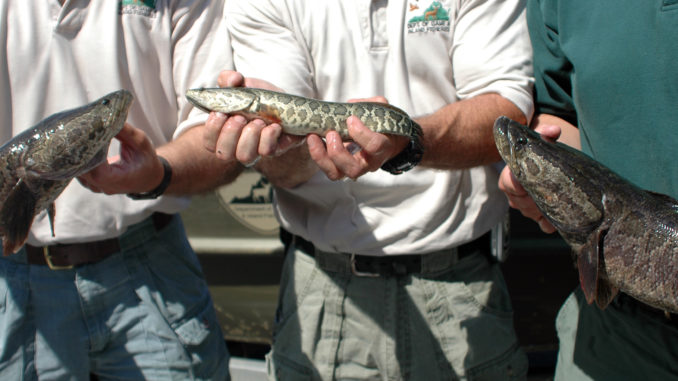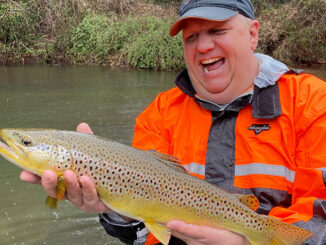
RALEIGH — With the May 13 reported catch and release of a northern snakehead in the Catawba River, biologists with the N.C. Wildlife Resources Commission are urging anglers to be on the lookout for this introduced, predatory fish.
If anglers suspect they have caught a snakehead, they are asked to keep it, freeze it or place it on ice, and report the capture to the Wildlife Resources Commission at (919) 707-0220.
Biologists do not want anglers re-releasing a suspected snakehead because the species, which is native to Asia, has been known to displace native fishes in waters where it has been illegally introduced. An established snakehead population could reduce the abundance of popular game and non-game species.
Northern snakehead are often mistaken for the bowfin, but unlike native bowfin, they can have devastating impacts on resident fish communities by competing with them for food and habitat, preying upon them and transmitting disease.
Snakehead species can live out of water for limited periods of time and can survive in degraded habitats that normally would be unsuitable for native fishes. Once established in a body of water, they may become the top predator because of their large size and aggressive nature.
These potential negative impacts upon existing fisheries, plus a similar reported sighting in Lake Wylie in 2002, led the Wildlife Commission to pass a regulation in 2002 making it illegal to transport, purchase, possess or sell live snakeheads in North Carolina.
Despite the WRC’s proactive approach to keep the fish out of N.C. waters, biologists with the agency and the United States Geological Survey were notified May 17 about the catch and release of a snakehead into the Catawba River.
Later that day, they confirmed the fish reportedly caught in the upper Catawba River arm of Lake Wylie was a northern snakehead. They identified the fish from a photograph submitted by an angler who said he caught the fish, which measured 31 inches in length and weighed 13 pounds, near Belmont four days earlier. The angler mistakenly thought the snakehead was a bowfin and released it back into the river.
Confusing the two species is easy to do since the bowfin and the northern snakehead resemble one another. The best way to distinguish between the two species is to look at the anal fin, which is the bottom rear fin near the tail. The snakehead has a very long anal fin, which is more than half the length of the dorsal (back) fin, and has 18 rays. The bowfin has a shorter anal fin, which is less than half the length of the dorsal fin, and has 12 rays.
Biologists won’t speculate as to how the snakehead reportedly got into the river, although most introductions are made when people illegally keep them as pets or purchase them live from fish markets and then release them.
The WRC has available at its Web site a list of frequently asked questions about northern snakeheads and a flyer that notes the differences between a bowfin and a northern snakehead. Visit www.ncwildlife.org and click on the Northern Snakehead Information link located in the Features Section at the home page.
Additional information on snakeheads can be found at the United States Geological Survey’s Web site, http://fisc.er.usgs.gov/Snakehead_circ_1251/html/flyer.html.




Be the first to comment